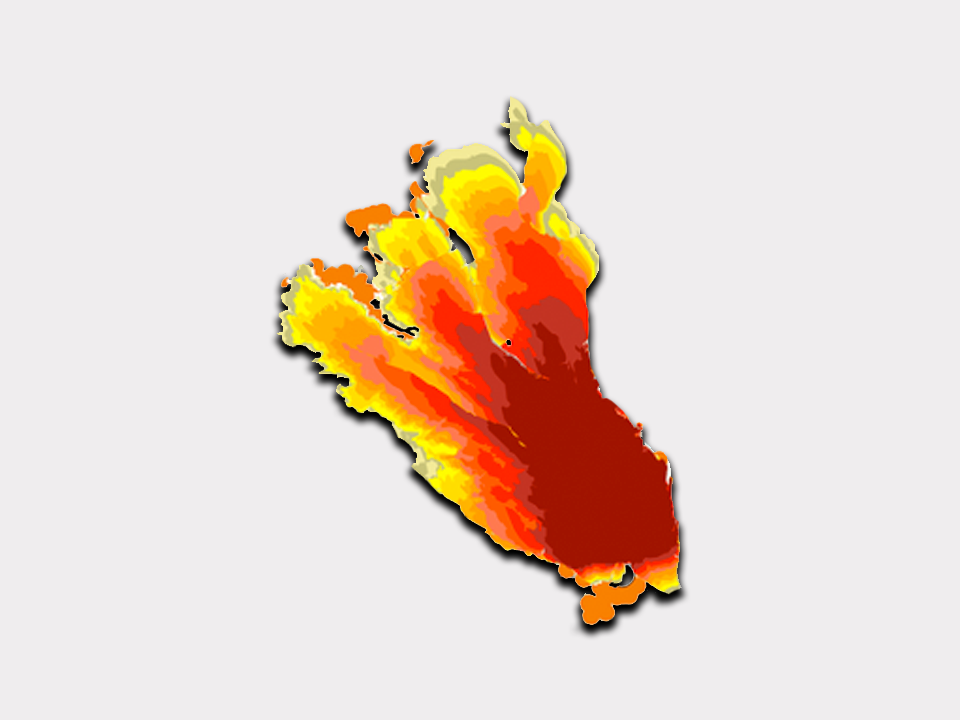Forward Heating in Wind-Driven Fire Spread
Tang, W., Miller, C., Gollner, M., Forward Heating in Wind-Driven Fire Spread, In 5th International Fire Behavior and Fuels Conference, 2016.
Abstract
Wildland fires pose a significant threat to the environment and society at large. The large number of unknowns makes wildland fire predictions much harder than those typically encountered within the built environment, especially under the influence of wind. The spread rate of a fire depends largely on forward heating from the flame to unburnt fuels, however few measurements of heat fluxes from wind-driven flames exist. In wildland fires, the intermittent nature of flame is also thought to be uniquely important to the flame spread process. In this work, both averaged and time-dependent aspects of the flame are studied, including the total heat flux distribution on the downstream surface, flame extension and attachment, and frequencies of intermittent flame movements. Correlations of these properties, dependent on both fire size and ambient wind, will provide a means to describe the thermal exposure during fuel heating and ignition in wind-driven wildland fires. This data will provide a basis for both understanding and model development for wildland fire spread as well as provide a dataset for future numerical validation of computational fluid dynamic models. Detailed laboratory experiments were performed on line fires under forced flow with a variety of ambient wind velocities and fire sizes. Local heat fluxes were measured onto a nearly adiabatic surface downstream of a line burner. The downstream heat flux distribution was correlated as a piecewise function with the local Richardson number in two regimes, the first with higher heat fluxes, where the flame remained attached the downstream surface and the second with a steeper decay of heat fluxes. This observation was further corroborated by analysis of side-view images of the flame, which showed the attachment location was linearly correlated with the location where the Rix equaled unity. The flame forward pulsation frequency and the flame-fuel contact frequency were also extracted. Scaling analysis indicates that they can be well correlated with Fr, Q*, and local Rix respectively. The location of maximum pulsation frequency, xmax, for each burner/wind configuration was also obtained using the VITA technique. Further study indicates that xmax can be well estimated using mean flame properties.


